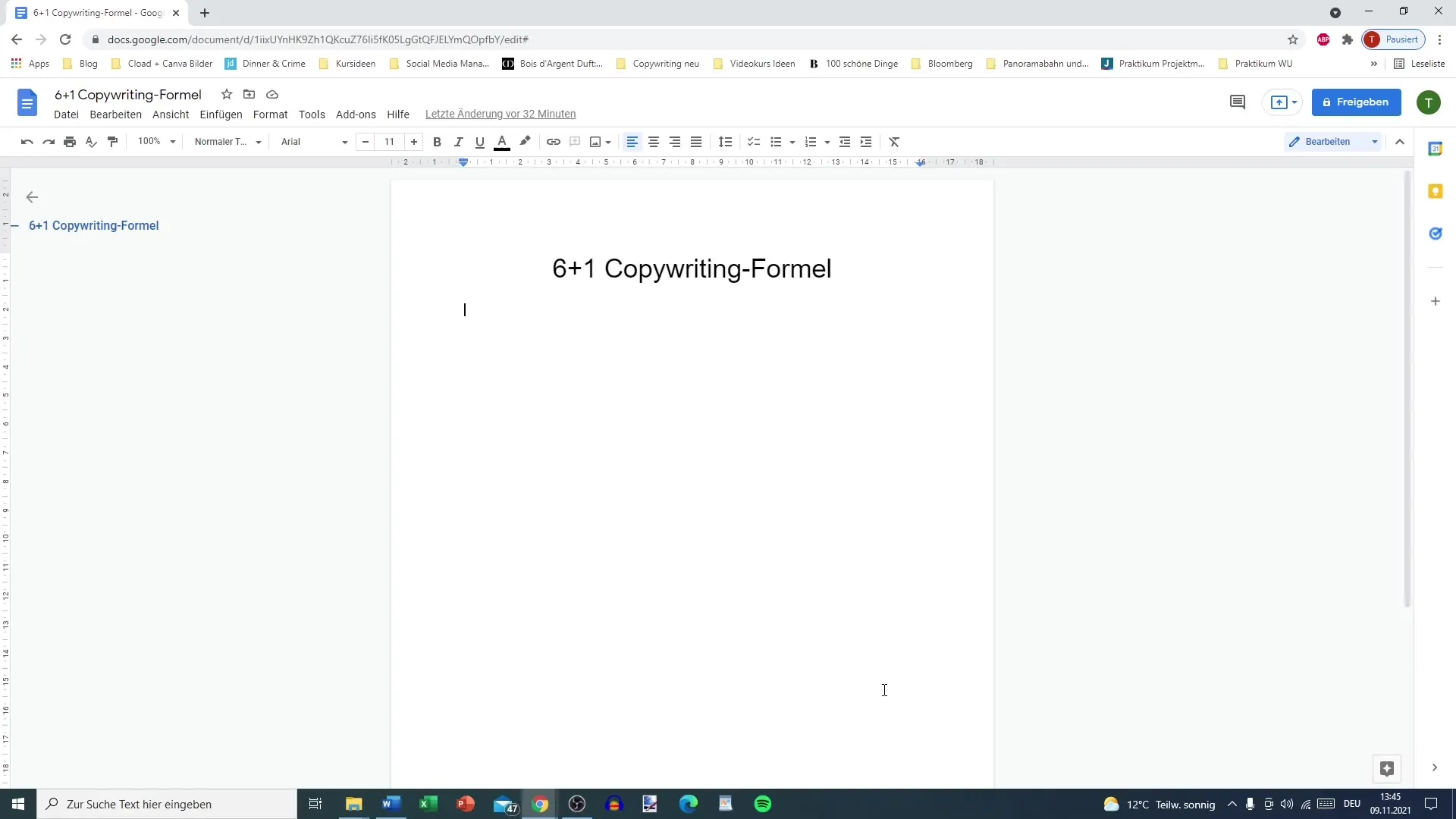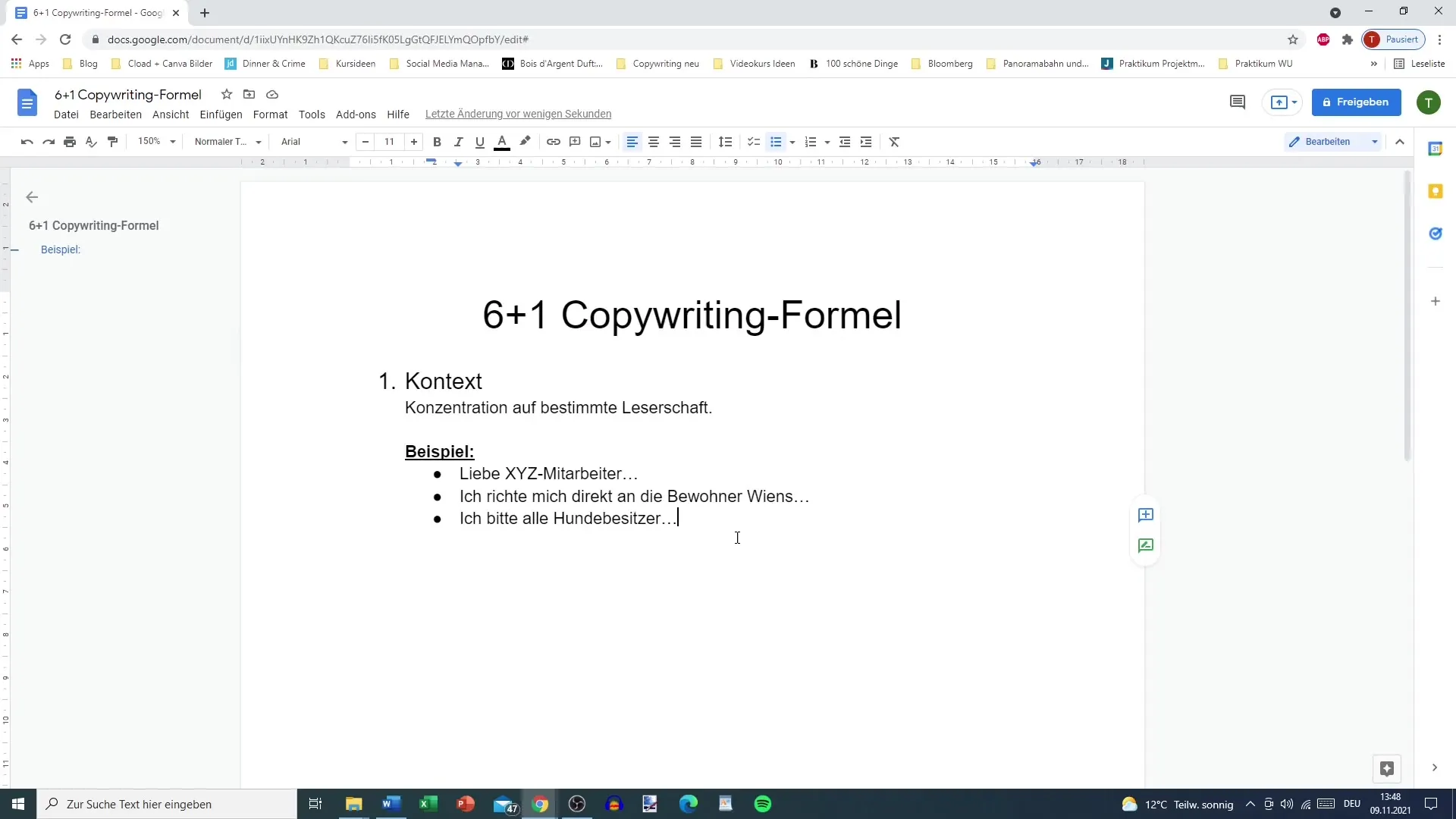In copywriting, the context is the first step to achieve targeted communication with your audience. A well-thought-out context allows you to efficiently build a dialogue with your readers and guide their attention purposefully.
Key Insights
- The context is the starting point for any form of communication and crucial for the understanding between author and reader.
- A clear address to the target audience helps to spark the interest of readers who are actually interested in your content.
- Avoid setting too broad of a framework; instead, focus on the specific needs and interests of your readership.
Step-by-step Guide to Applying the 6+1 Formula
1. Developing an Understanding of the Context
To communicate effectively, a deep understanding of the context is necessary. The context sets the framework for your message and allows you to define the relationship between you and your readership. To achieve this, you should ask yourself clear questions: Who are my readers? Why should they be interested in my text?

2. Directly Addressing the Target Audience
Effective copywriting usually begins with addressing your target audience directly. Instead of choosing a general approach, you can get specific. For example, "Dear dog owners in Vienna," is much more targeted than simply writing dog owners. By addressing them directly, you can ensure that your readers feel immediately engaged.
3. Focusing on Specific Interests
Once you have identified your target audience, focus on their specific interests and needs. This could mean tailoring your text in a way that directly appeals to readers who play the piano or are interested in learning it. For example: "All those who want to play the piano or love piano music," specifically targets the people you want to reach.

4. Creating Clear Differentiation
An important point in copywriting is the differentiation between your target audience and other readers. While it may seem tempting to want to address every reader, it often comes down to effectively communicating with a specific group. By positioning yourself clearly, you provide clarity for both yourself and the reader, leading to a stronger connection.
5. Using Persuasiveness and Call-to-Action Elements
Use the context to give your readers compelling reasons to continue reading or take action. Consider which information or offers are particularly appealing to your target audience and incorporate these elements into your text. It could be something like: "Discover the best piano playing tips now!" This encourages your readers to want to learn more.
Summary
Understanding and effectively utilizing the context are fundamental for addressing and engaging your target audience. The first step is to clearly define your readers and address them directly. By focusing on the specific interests and needs of your target audience, you can ensure that your message is both relevant and inviting.
Frequently Asked Questions
How important is context in copywriting?Context is crucial as it forms the basis of the relationship between author and readership.
How can I best address my target audience?Address your target audience directly using specific formulations that reflect their interests.
What happens if I address too many readers?If you address too many readers, your text may seem impersonal and lose the interest of those genuinely interested.
What are effective call-to-action elements?Call-to-action elements are compelling incentives that motivate the reader to continue reading or take action, such as offers or valuable information.


